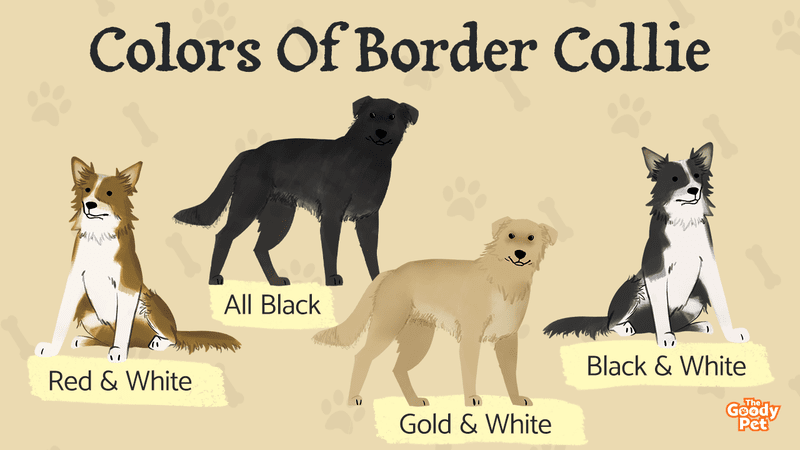According to professor of canine psychology Stanley Coren, Border Collies are the most intelligent of all dog breeds. They have the perfect combination of features for trainability including obedience, fast learning, and fantastic memory.
Big brains are not the only thing Border Collies have going for them with these brainy dogs also being some of the most beautiful dogs out there. There are 19 different variations of this beauty with Border Collies.
These varieties include some rare Border Collies like the short-haired Border Collie and patterns like the sable-merle combination. Here are all the variations of Border Collies you should know about.
19. Sable Merle
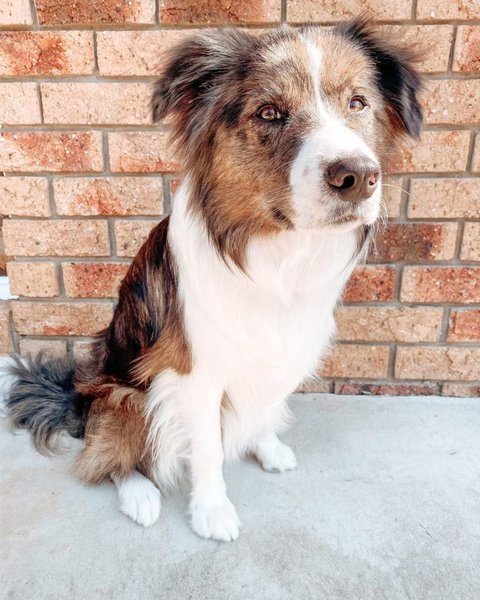
Sable Merle Border Collies are very unique variations not only within the Border Collie dog breed but among dog breeds in general. This is because they combine two very distinct patterns, the sable and merle patterns, on the same coat.
The coat will have the typical merle spots in either red or black while the tips of most of the fur will have black markings.
White patches on the sable and merle Border Collie will usually be spared either markings.
18. Sable
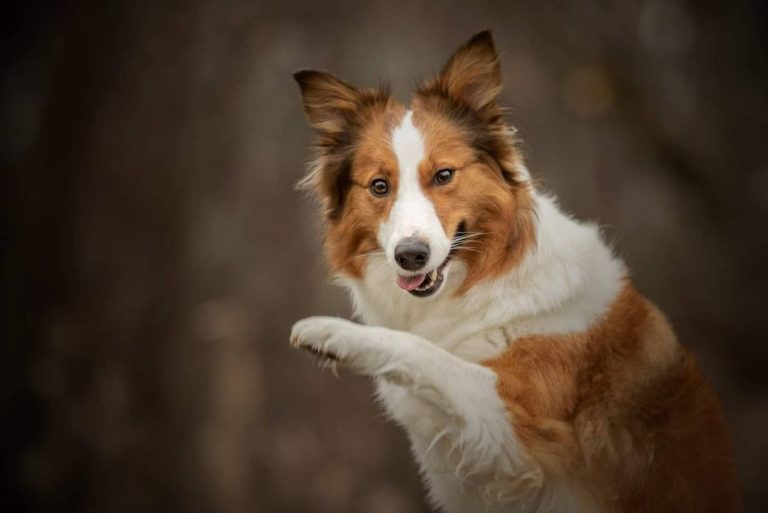
Sable Border Collies have black tips as the markings on lighter strands of fur. This creates an ombre-like color gradient with a lighter, usually brown shaft and roots and black tips. From a distance, the black tips may appear as individual patches within the coat.
The sable markings on Border Collies are often missed especially in frequently groomed dogs where the tips are trimmed off.
Even without this trimming, the sable markings may be missed as they sometimes appear on limited areas of the coat.
17. Black & White
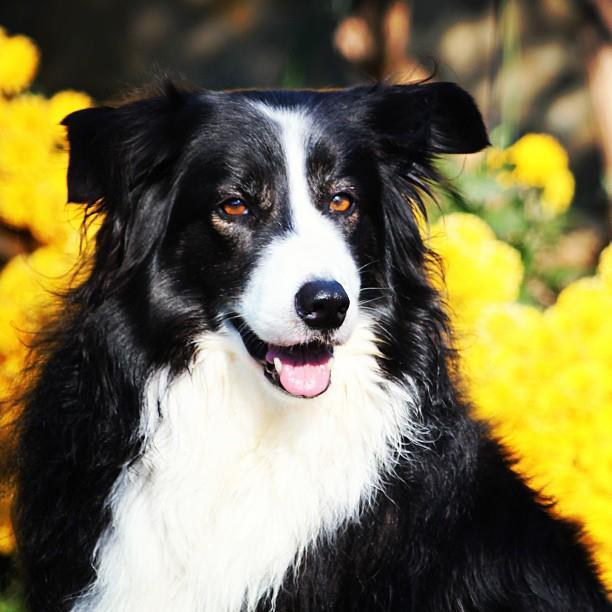
Black and white is one of the most common variations of the Border Collie in terms of coat colors and patterns. The black part of the coat is a dark and solid shade which sets it apart from very similar blue and white variations of the Border Collie dog breed.
Black and white Border Collies are themselves very eclectic in terms of appearance and patterns. Either the white or black parts of the coat may form the majority. There may also be additional markings like merle spots or ticked spots depending on genetics.
16. Blue & White
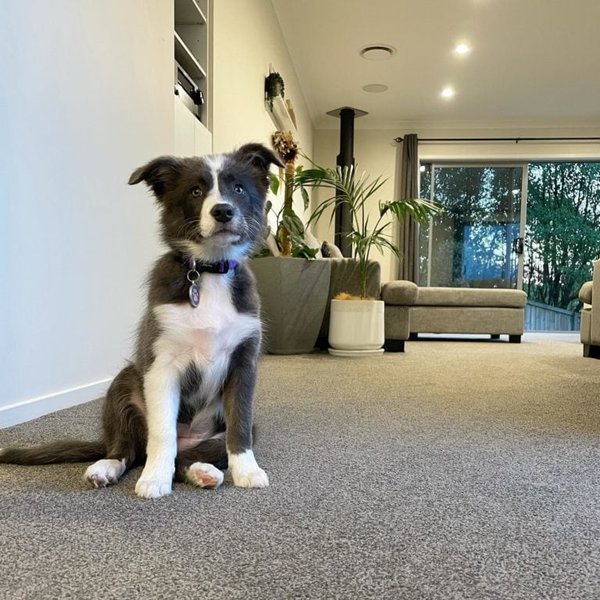
Blue and white Border Collie occur as a result of dilution of black fur in Border Collies with genes for a black and white coat. Instead of a solid black as the dark color, the dilution waters down the black resulting in a bluish-gray shade of coat.
As with any other dilution, the white fur on the blue and white Border Collie is spared resulting in a brilliant, solid white. This white part of the coat may either exist as markings or covers majority of the coat.
15. Gold & White
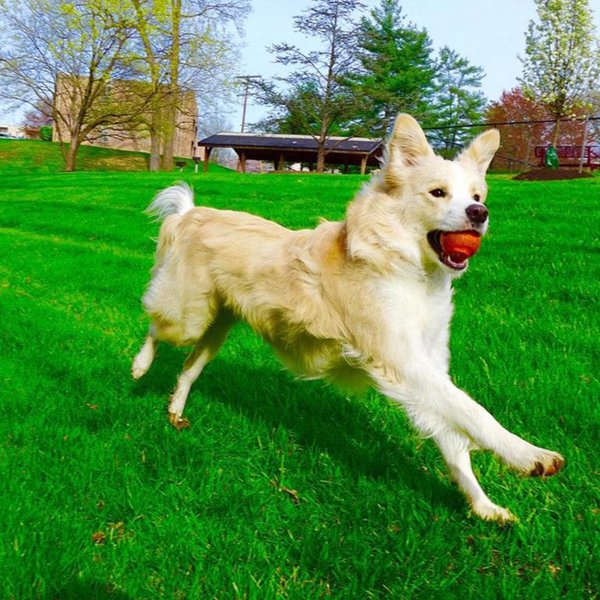
The gold part of the gold and white Border Collie is what sets this variation apart from other types of Border Collie. The gold part of the coat is essentially a very light shade of brown with yellowish undertones that create the gold effect.
Gold and white Border Collies are among the most beautiful varieties there are. There is something light and fun about the combination of the bright yellowish brown and white that just matches the friendly and loving personality of the Border Collie so beautifully.
14. Red & White
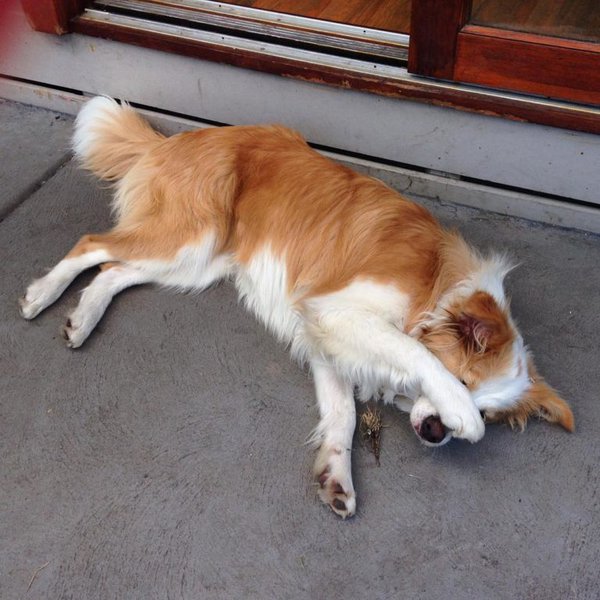
The red and white Border Collie is often mistaken for brown and white Border Collie variations. Technically speaking, red is a shade of brown which is why the mistake is made commonly.
However, the red in red and white Border collies has a lighter, rusty red quality to it. This is best appreciated in bright lighting.
The white may occur as minority markings with a saddleback distribution of the red fur. The white fur may also cover most of the coat with the red fur technically existing as the markings.
13. Lilac & White
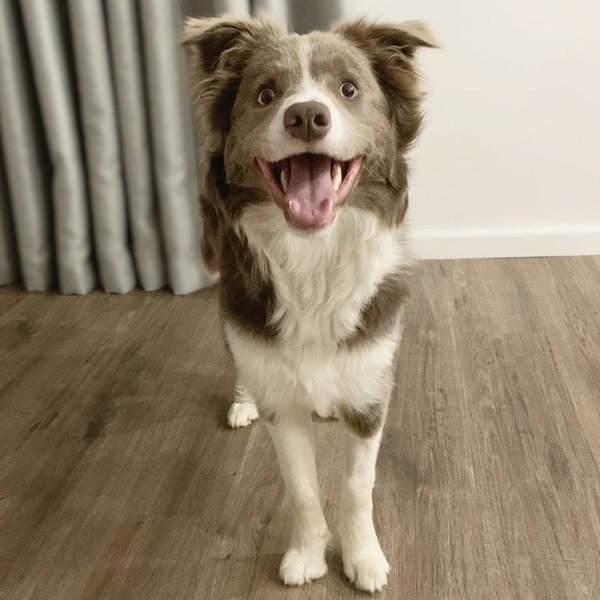
Lilac and white Border Collies are a variation of the red and white Border Collie where the dog has a dilution gene. The dilution gene waters down the red-brown part of the coat. This creates a lilac-lavender shade which forms the dark part of the coat.
The lilac part of the coat may cover majority of the body in some cases. However, in Irish Pied Border Collies with the lilac and white combination, white fur covers most of the coat.
12. Brown & White
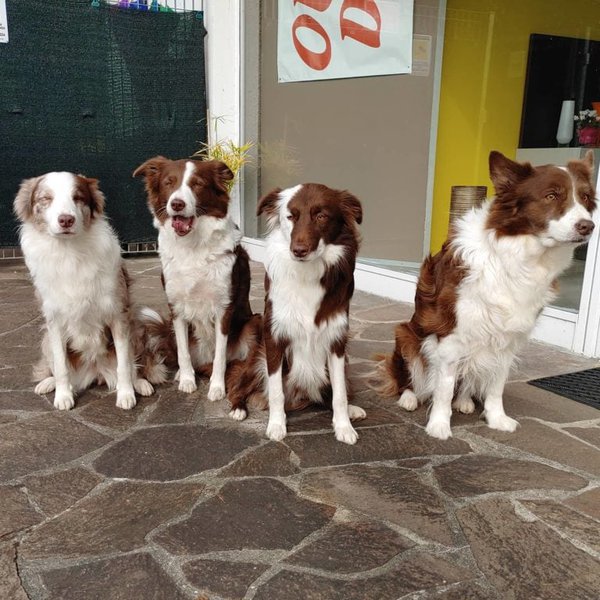
Brown and White Border Collies are among the most popular kinds within the breed. The dark part of the coat consists of brown fur in a range of shades from dark chocolate or red tones to lighter earthy shades of brown.
The distribution varies and may have a saddleback pattern with a mainly brown coat or Irish pied distribution with white covering most of the coat on the Border Collie.
11. Seal & White
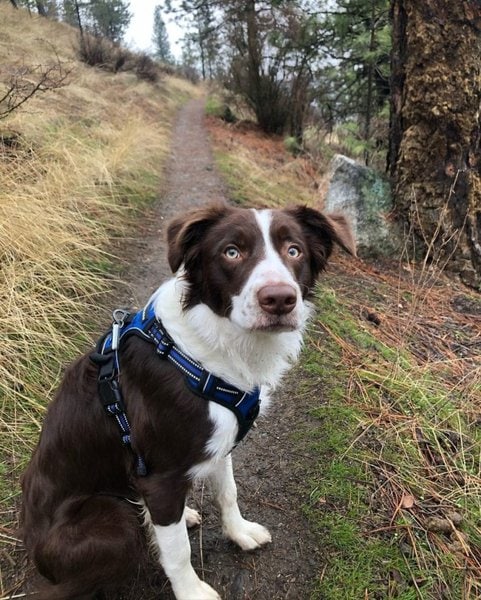
At first glance, the seal and white Border Collie looks like your regular black and white variety especially in poor lighting. However, if you take a closer look with good light then you will notice that the apparently black part of the coat has dark, red undertones.
More often than not, seal and white Border Collies will have a saddleback pattern with the black-red seal coat covering the back like a saddle and parts of the head. The rest of the parts will be a pure white shade.
10. Slate Gray
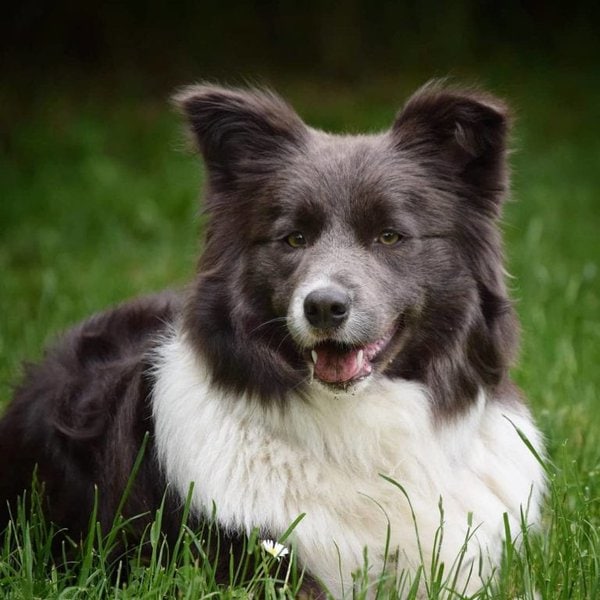
In the Border Collie breed, the term slate generally refers to the diluted quality of a coat color. In Slate gray Border Collies in particular, it is black fur that is diluted to give a powdery-gray.
Slate gray Border Collies will usually have other markings on their bodies. The most common in this case are white markings that appear mainly on the neck, chest, limbs, and part of the face.
Merle markings are also commonly found on slate gray Border Collies especially with selective breeding for the two unique aesthetics.
9. All Black
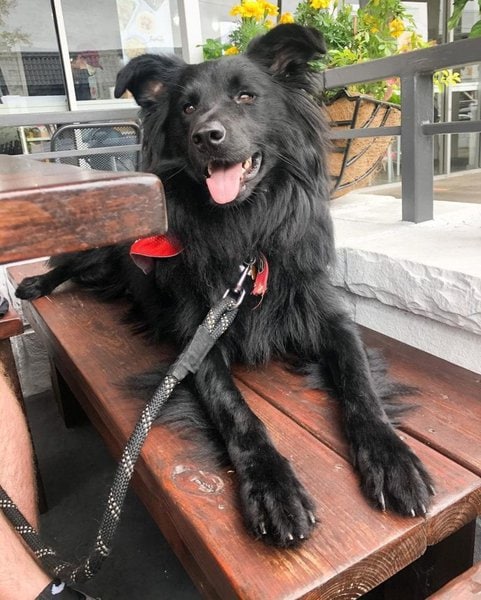
As the name suggests, all black Border Collies have a full body coat with solid black fur. There shouldn’t be any markings in any other color anywhere on the coat itself.
All black Border Collies are not really as rare as most people assume them to be. However, there is no denying that there is something unique and truly special about the uniformly black coat that gives black Border Collies an air of mystery and an exotic energy.
8. Tricolor
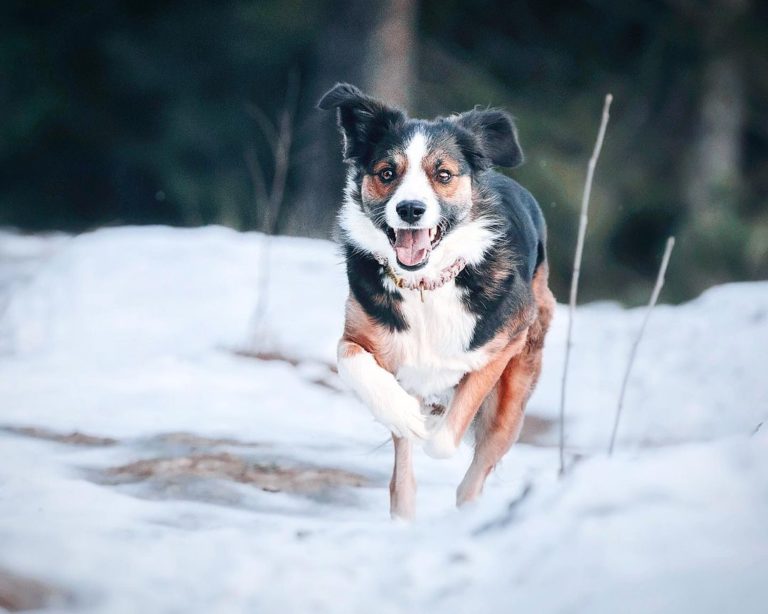
As the name suggests, tricolor Border Collies have 3 colors appearing simultaneously on the coat. The most common combination is that of a mainly black coat with tan and white markings. This classic combination is known as the black tricolor variation.
Other common tricolor combinations within the Border Collie dog breed include red, tan and white. Here, red is the main color with tan and white forming the markings. This combination in Border Collies is what is known as the red tricolor.
7. Tan Points
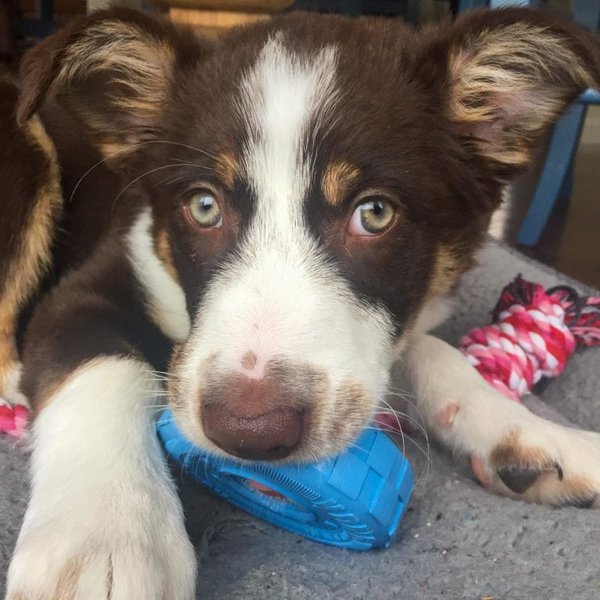
Tan points are very common in Border Collies. They tend to usually occupy very small parts of the dog’s coat and have a somewhat predictable pattern of distribution.
This distribution of the tan points includes spots over the eyes, on the muzzle, on the inner surface of the ears, and on the paws. The tan points may also appear on the torso usually on the sides of the belly, on the neck, and chest.
6. Saddleback
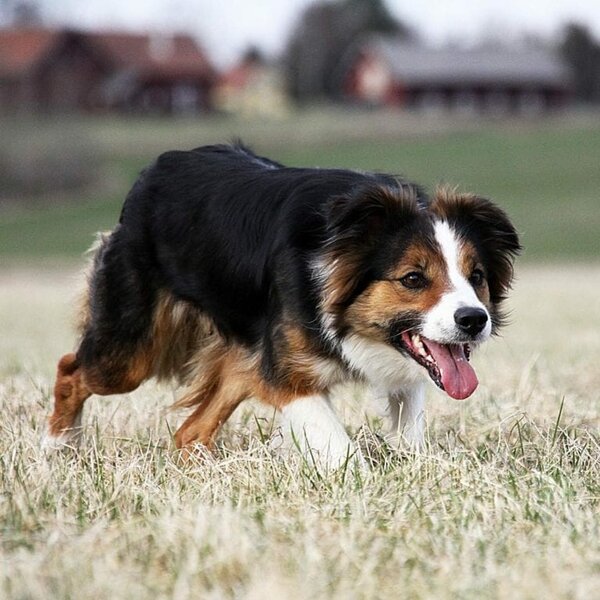
Saddleback markings in Border Collies occur mainly on bicolor variations but may also be seen with tricolor Border Collies. The main dark color appears in a saddle-like distribution over the back and sides of the torso as well as the back of the head.
The rest of the coat including the limbs, belly area, chest, and neck will more often than not have white fur but it may also be brown fur with tricolor Border Collies.
5. Ticked
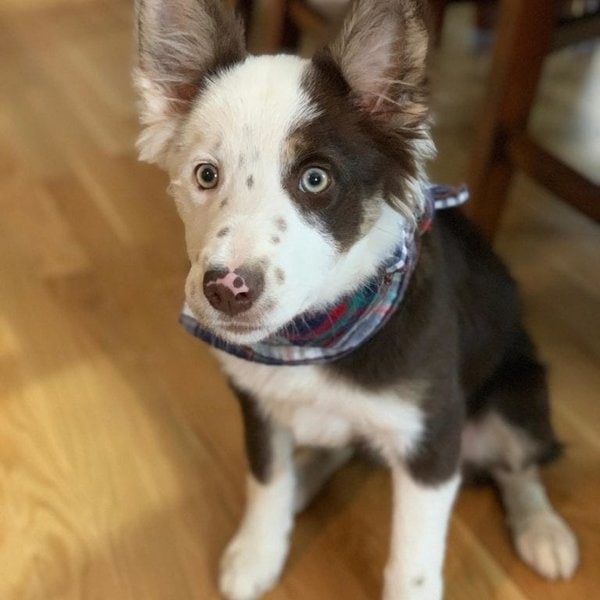
Ticked markings on Border Collies are unique compared to other variations of coat markings in that they primarily affect white patches of fur where most other markings spare these patches.
The ticked markings appear as small, somewhat regular and distinct spots of color on white patches of fur. The spots can be any color from black to brown.
Ticking can occur anywhere on the Border Collie’s body where there is white fur. However, most of the ticking occurs on the limbs and face.
4. Brindle
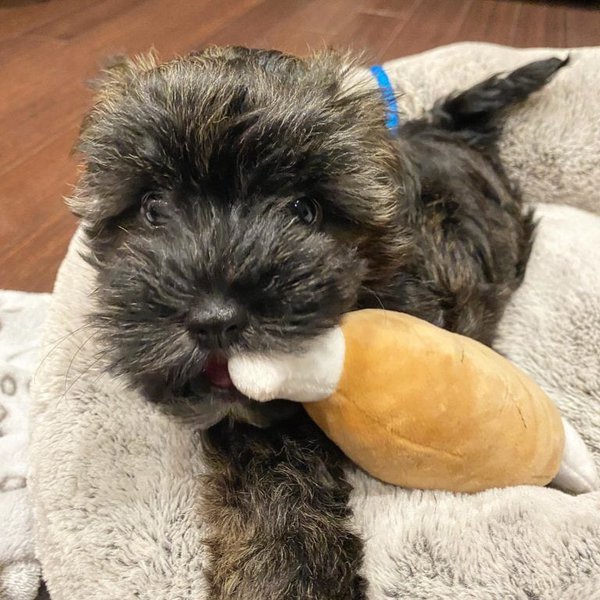
Brindle Border Collies have stripe markings which make them look a little like tigers. This aesthetic includes a combination of black stripes on brown fur. The dog may or may not have pure white markings usually on the face, neck, and chest.
Contrary to popular beliefs, brindle Border Collies are actually purebred and not mixed with other brindle dog breeds. This trait is as a result of the brindle gene which is fortunately not associated with any specific, serious, health issues.
3. Merle
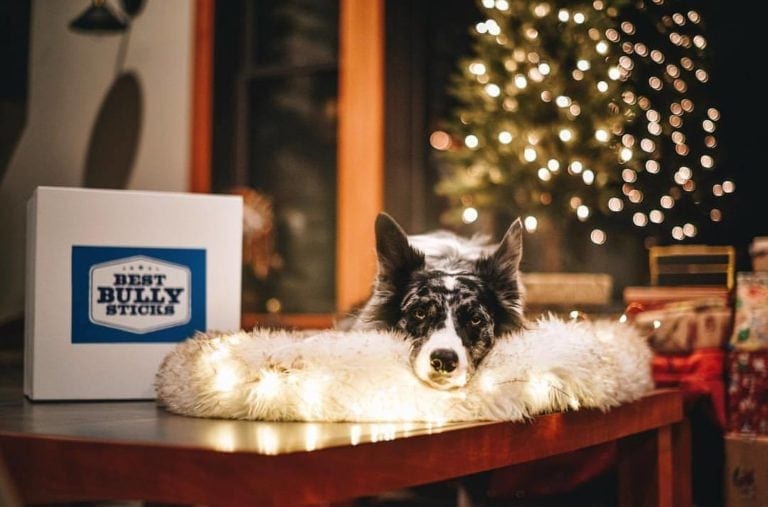
Merle Border Collies have a very beautiful and almost exotic-looking aesthetic. This is due to the presence of irregular, dark spots on lighter brown, white, or gray fur. The merle Border Collie may also have blue eyes which further contribute to this unique aesthetic.
The degree and pattern of distribution of the markings varies from one Border Collie to another. Some have full body coverage with the spots and others having the spots only around the face and neck areas.
2. Short Smooth Coat
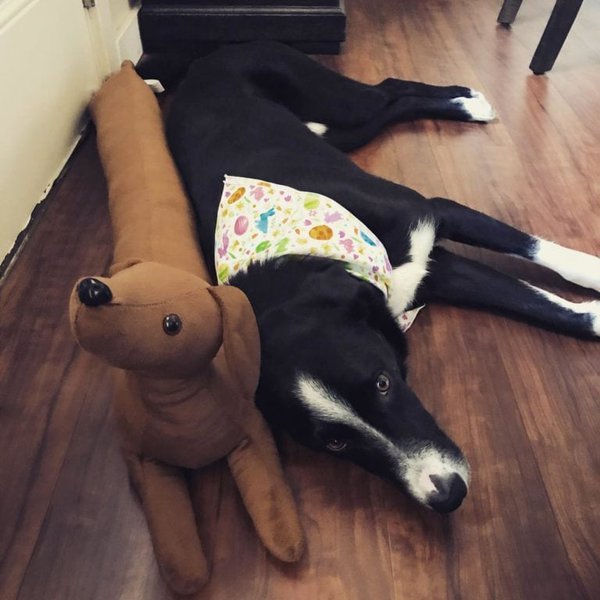
The short-haired Border Collie is another acceptable coat variation of this dog breed according to the American Kennel Club’s standards for the Border Collie. The fur in this case is short and lays close to the body.
The fur is also smoother to touch than the long coat variation of Border Collie coats.
While the fur is short over the entire body, there may be feathered spots of longer fur mainly on the ears, face, and paws.
1. Long Rough Coat
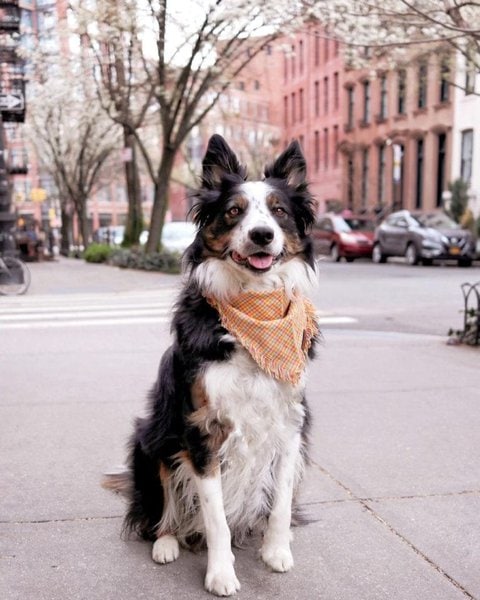
Contrary to popular misconception, the texture of the long, rough coated Border Collie is what matters the most and not the length itself. The fur may not look like it but it is usually rough and coarse to touch.
Fur on a long, rough coat Border Collie is also often long. However, it may be short especially over the face and paws even without trimming. The rest of the body will have long, feature fur.
Related Questions
What Is The Rarest Border Collie Color? All white is the rarest color within the Border Collie breed. They occur as a result of expression of very rare and recessive genes responsible for the leucistic, all-white coat. Other rare Border Collie colors include the likes of lilac as well as unique patterns like merle or the merle and sable pattern combination.
Will My Border Collie Pink Nose Turn Black? Border Collie pink noses eventually turn black in most of these dogs. The pigmentation from pink to a darker tone like black occurs during the first few months of the puppy’s life. There are cases where the pink nose may persist into adulthood. The most common cause of this is albinism which itself is quite rare among Border Collies.
What Does Blue Merle or Red Merle in Border Collies Mean? The difference between blue and red merle Border Collies is in the color of the irregular, mottled spots. Blue Merle Border Collies have black spots while Red Merle Border Collies have red or liver-colored spots. The rest of the coat will usually be a lighter color like white, off-white, or gray.

